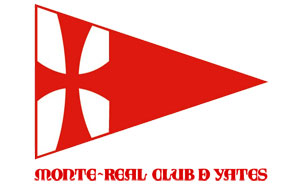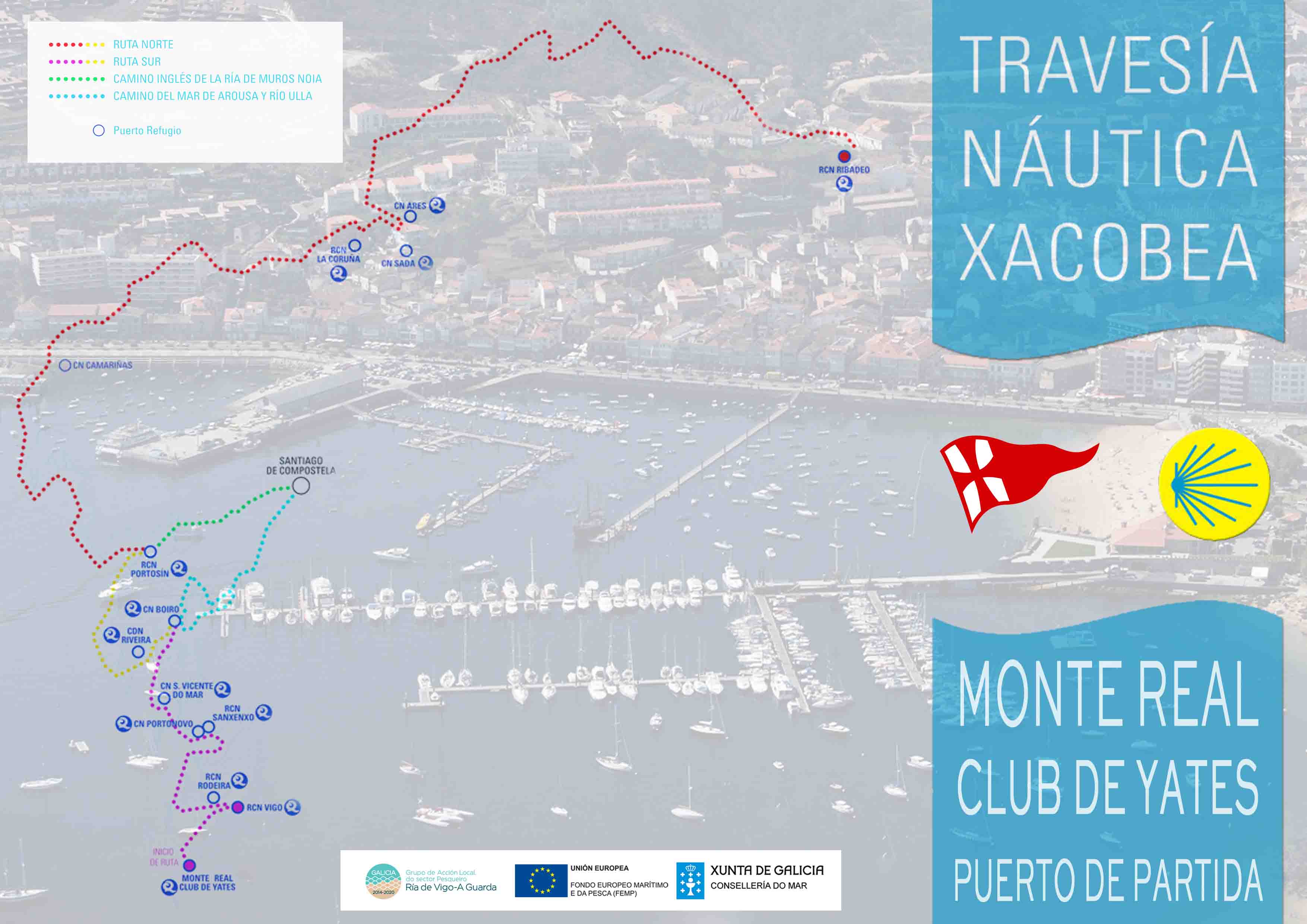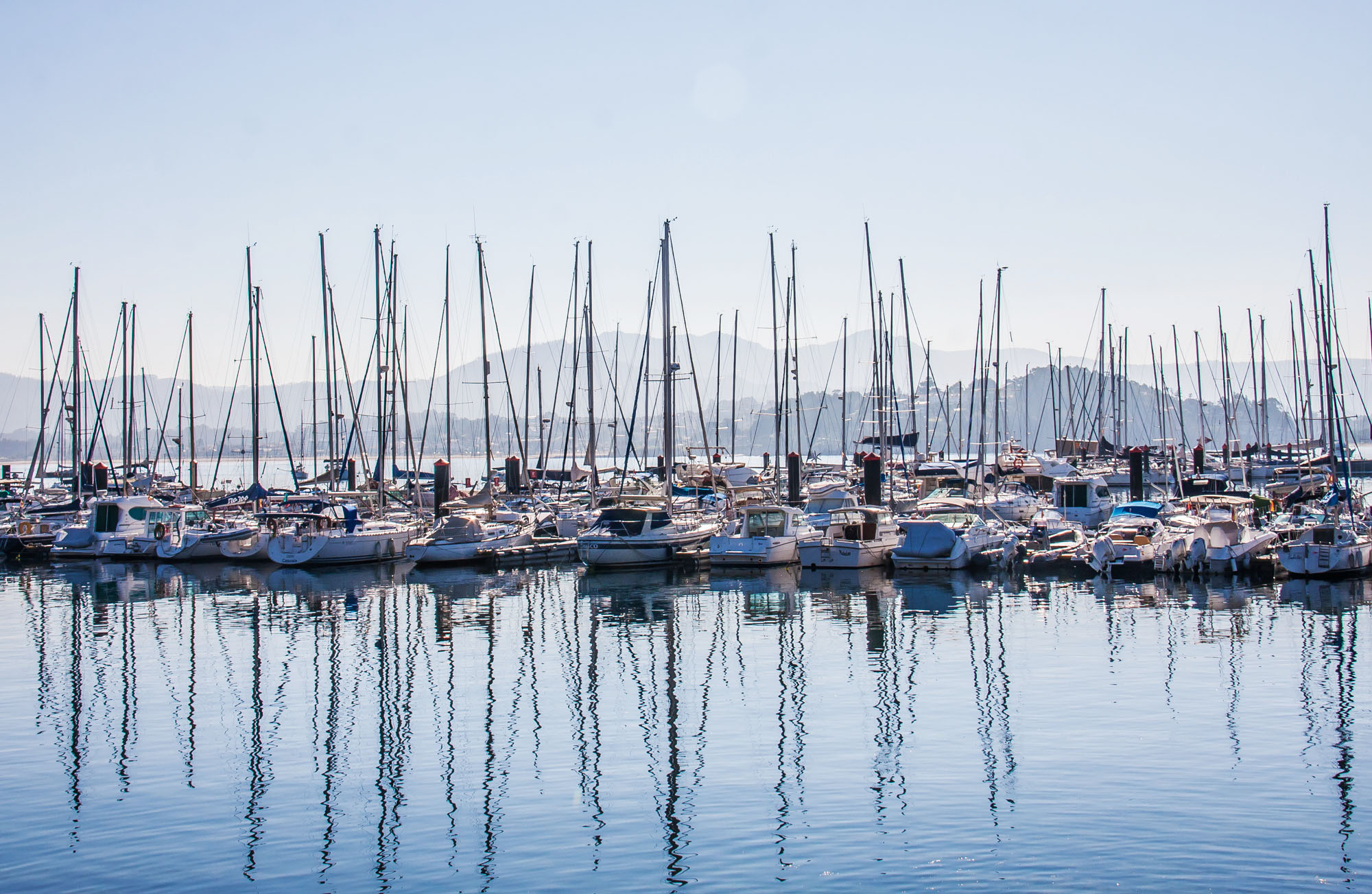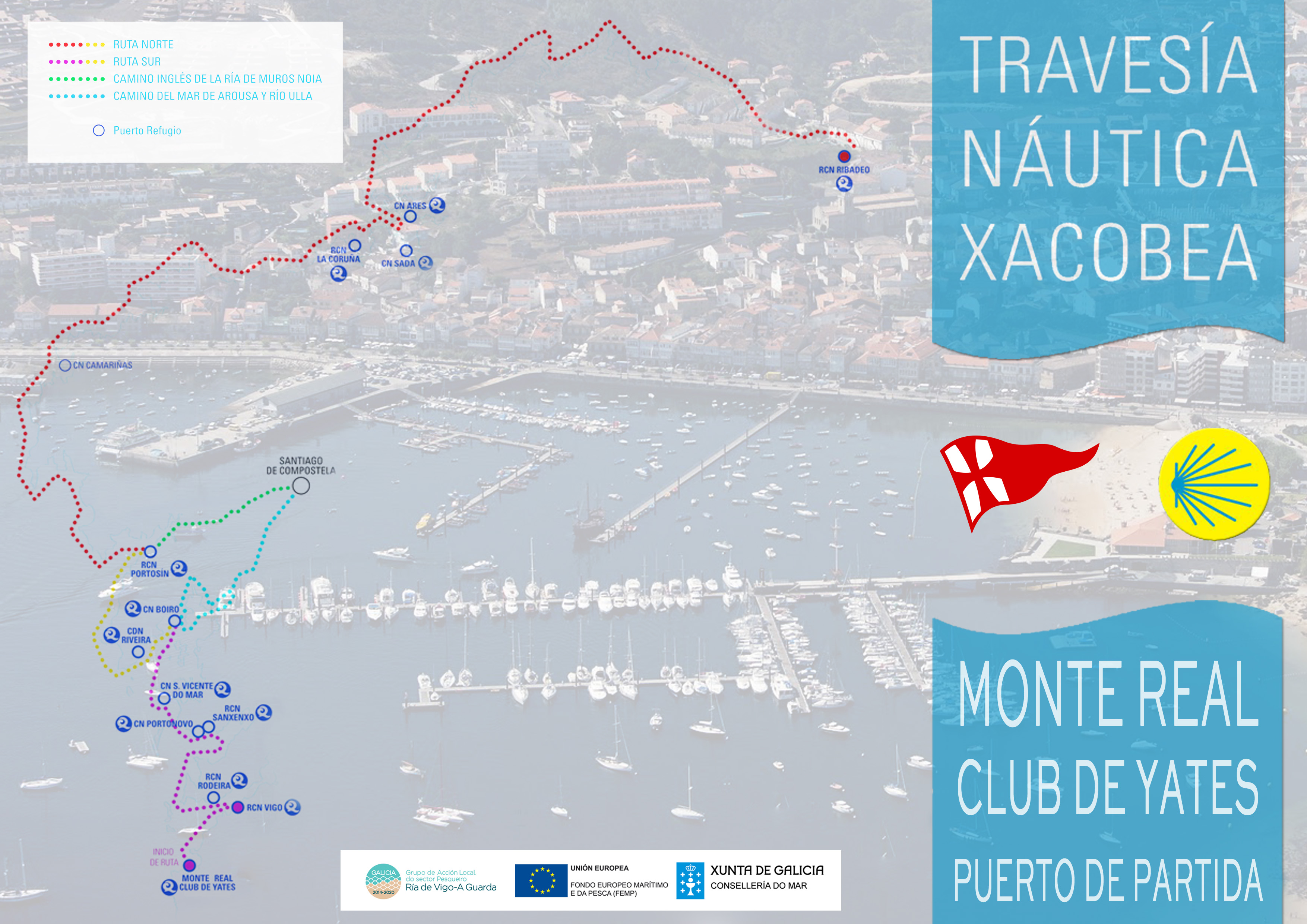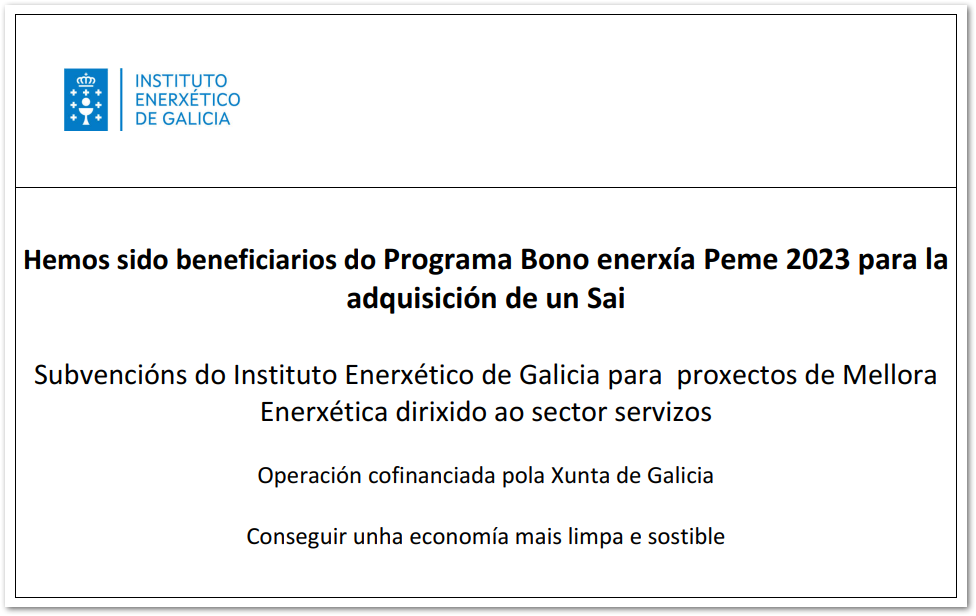· The Monte Real Club de Yates becomes the starting port of the Xacobea Nautical Crossing, a new pilgrimage route to Santiago that runs through the 13 Galician ports and marinas with the Q certification for Tourist Quality
· To obtain the Compostela, maritime pilgrims must sail 90 nautical miles, stamping their credential at the ports of passage, and finish the journey by land to the tomb of the Apostle Santiago.
· An investment of more than 150,000 euros co-financed by Monte Real, the Consellería do Mar de la Xunta de Galicia through the FEMP and the GALP7 has allowed the club to improve its facilities to receive pilgrims
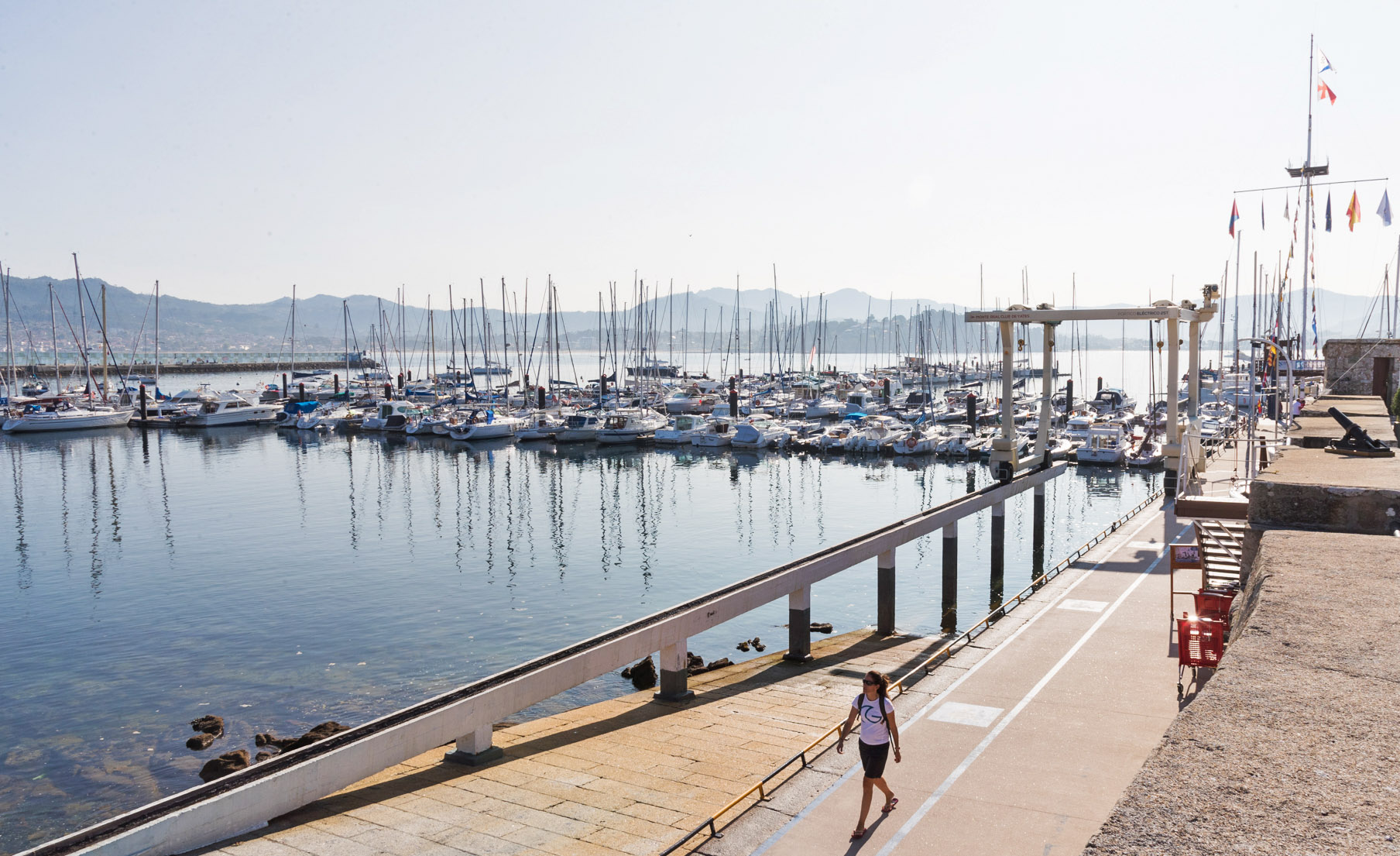
After several months of works and remodeling, everything is now ready at the Monte Real Yacht Club to receive sailors who are going to complete the Camino de Santiago by sea, a new version of the historic pilgrimage to Compostela promoted by the Xunta de Galicia of which the Baionese club is the port of departure.
The “Xacobean Nautical Crossing”, as this new route is called, seeks to offer sailing lovers the possibility of making the Camino de Santiago through the sea and to obtain the Compostela by stamping a pilgrim’s credential in the most outstanding marinas of Galicia.
Of the 45 marinas on the Galician coast with the capacity to receive boats in transit, only the 13 ports distinguished with the Q for Tourist Quality certification are part of the proposal, a selection that seeks to guarantee the pilgrim by sea the attention and services of the highest quality.
Due to its characteristics and historical trajectory, the Monte Real Club de Yates was chosen as the port of departure for the route in its southern version, and an investment of more than 150,000 euros co-financed by the club itself, the Consellería do Mar de la Xunta de Galicia Through the European Maritime and Fisheries Fund (EMFF) and the Local Action Groups of the Fisheries Sector (GALP), they allowed it to improve its facilities and services to receive the pilgrims at the beginning of the journey.
Several works aimed at minimizing the energy consumption of water and electricity, the application of a special discount of 25 percent to boats skippered by women and the construction of an access ramp to facilitate access for people with disabilities were some of the measures put into march within the framework of a plan whose axes were sustainable development, equality between men and women and non-discrimination. In addition to enjoying all the changes made in the club, the pilgrims who start the “Xacobea Nautical Journey” from Baiona will have a 15 percent discount on the usual rates.
Deseasonalize tourism in Galicia, promote nautical tourism and the activity of the community’s marinas and offer an alternative to the traditional pilgrimage routes are the main objectives of a proposal in which, in addition to the Xunta de Galicia, also participates Asnauga, the Association of Nautical Clubs of Galicia.
90 miles under sail between Baiona and Compostela
The Xacobean Nautical Crossing offers sailors the possibility of obtaining the Compostela in a very similar way to how pilgrims who go on foot to Santiago obtain it. Like them, they must travel a minimum distance, in this case 90 nautical miles; and stamp your pilgrim credential at each crossing point.
The Monte Real Club de Yates is the port of departure for the southern route, which passes through Vigo (Real Club Náutico de Vigo), Cangas (Royal Club Náutico de Rodeira), Sanxenxo (Club Náutico de Portonovo and Real Club Náutico de Sanxenxo ), San Vicente do Mar (San Vicente do Mar Yacht Club) and Cabo de Cruz (Boiro Yacht Club).
From Boiro there are two possibilities to get to Santiago, either go up the Ulla River to Padrón or Pontecesures and from there continue by land to Compostela; or continue to Riveira (Club Náutico Deportivo de Riveira) and continue through Portosín (Real Club Náutico de Portosín) and Noia to continue from there to Santiago on foot.
In addition to the southern route, there is also a northern route from Ribadeo (Real Club Náutico de Ribadeo) passing through Ares, Sada, A Coruña and Portosín, with the same options for the end by land as the route from the south.
In both cases, the tomb of the Apostle Santiago is the goal of the Jacobean pilgrimage by sea and the Santiago Pilgrim’s Office is the place where sailors must present their stamped pilgrim credential to collect the Compostela.
